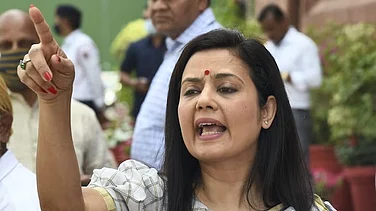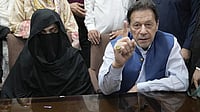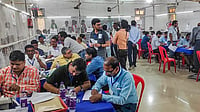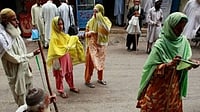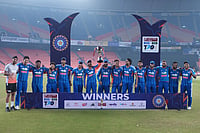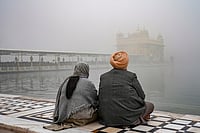As scientists who have initiated the latest search for the possible existence of a temple beneath the Babri mosque, the technical team of the South Delhi-based Tojo-Vikas International (Pvt) Ltd are a very tentative lot. Apart from the prominent disclaimer towards the end of their report, the surveyors are also quick to clarify that their findings cannot be termed "conclusive".
A senior member of the team told Outlook: "We never said that we found remains of a temple at the disputed site. We are not looking to get publicity through such controversies. We were commissioned to do a survey by the Archaeological Survey of India (ASI) and we've done it to the best of our ability." The company distances itself from the findings, saying there are "inherent limitations" in the technique used to indicate the presence of mounds and, more significantly, pillars beneath the disputed structure.
The disclaimer at the end of the survey report submitted in the Allahabad High Court says: "The findings presented in this report are based on the Ground Penetrating Radar (GPR) survey which was done according to the standards set for such surveys and by experienced personnel. However, due to inherent limitations of the technique, there might be discrepancies. And the company does not own the responsibility for any damage to the utilities arising out of such discrepancies."
According to company officials, they were commissioned to do the survey in late November. The team was in Ayodhya for 16 days from December 30. The survey was conducted under the supervision of company MD Rajeev Rishi, Claude Robillard, the Canadian chief geophysicist and advisor, and P.L. Narasimhan, advisor (infrastructure). The field crew had seven members. Incidentally, there was no archaeologist in the team.
Contrary to the perception that satellite imagery was used to decipher underground objects, the technique used was GPR. This technique uses high-frequency radio waves to probe the sub-surface. Radar pulses transmitted downwards from an antenna get reflected from the underground surface. The reflecting surfaces can be soil, rock, solid metallic or non-metallic objects.
Through this technique, the surveyors have identified underground boulders or formations which they refer to as "anomalies" or "obstructions". The anomalies discovered were of different types, the most prominent being the "discrete anomaly" which they refer to as "pillars". The supposed presence of these are what has led to the whole Ram Janmabhoomi controversy. Former ASI director-general B.B. Lal claims to have found pillar-bases in the area immediately south of the Babri mosque. This discovery forms the basis of the vhp's claim about the existence of the Ram temple beneath the mosque.
The surveyors steer clear of the debate by clarifying: "Not all the radar anomalies correspond to pillar or wall foundations. They could come from debris or even a simple boulder of a certain size, shape." They say the "exact nature" of these anomalies will be confirmed by archaeological trenching, which the ASI is to commence within a week.
From Pillar To Post
The Toja-Vikas survey hedges its bets on the 'exact findings'

From Pillar To Post
From Pillar To Post
Published At:
MOST POPULAR
WATCH
MORE FROM THE AUTHOR
×







